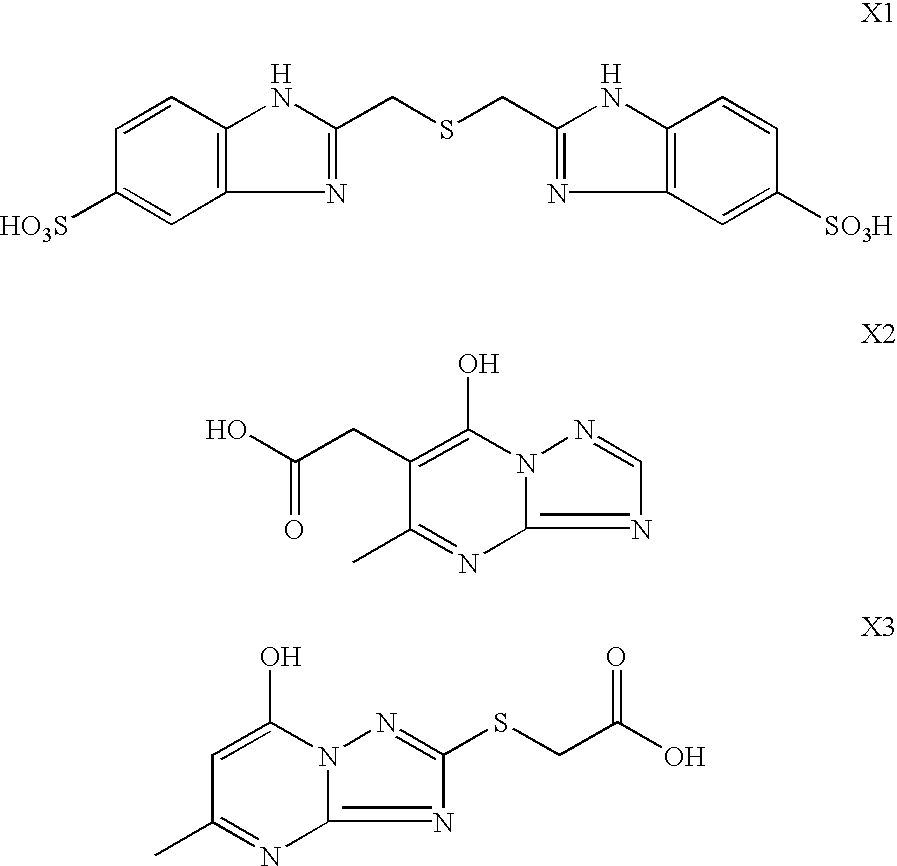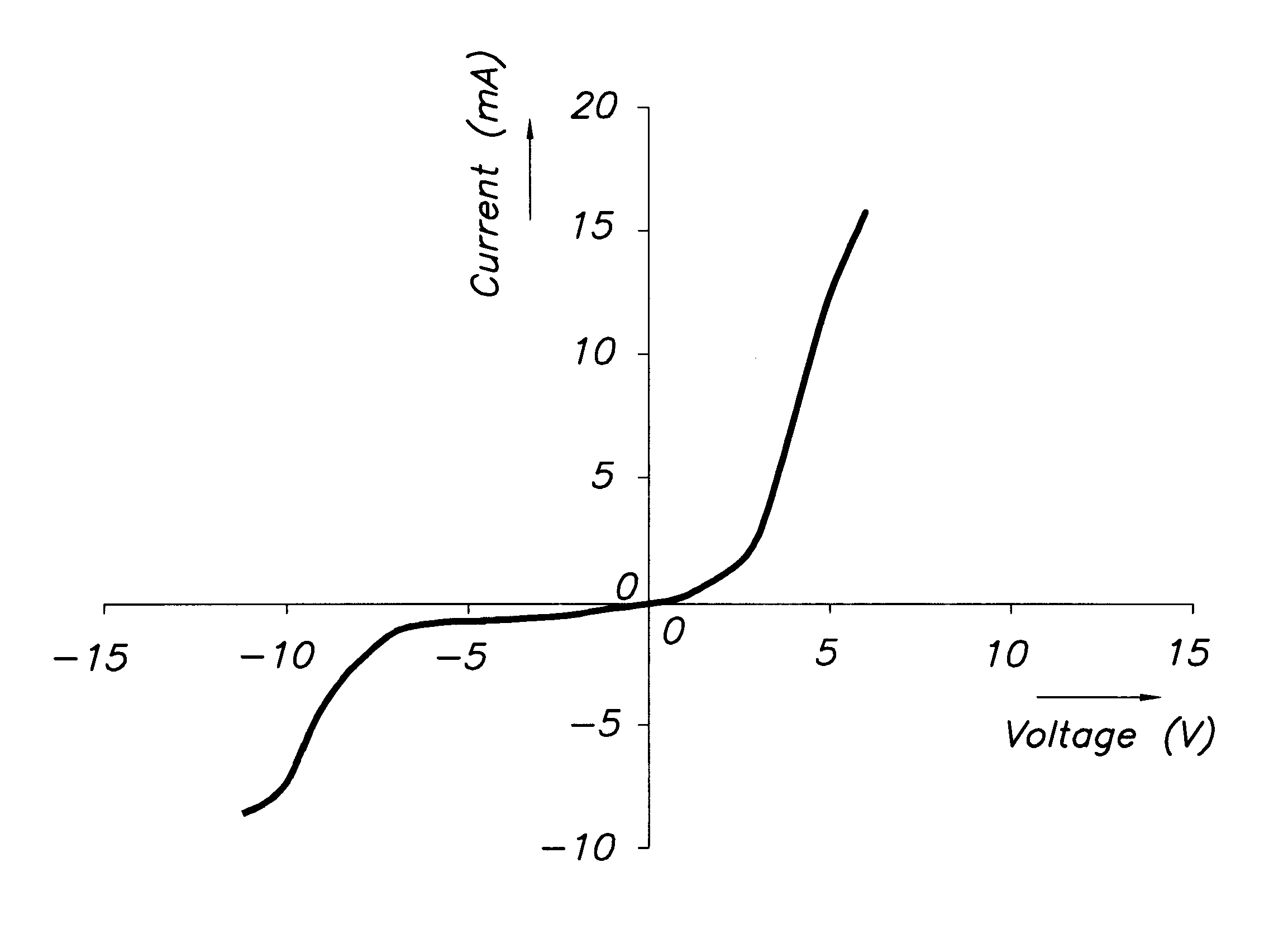Perparation of improved ZnS:Mn phosphors
a technology of phosphors and phosphors, which is applied in the field of phosphors, can solve the problems of difficult to obtain high-efficiency phosphors with more than 1 and drastically decrease the emission efficiency, and achieve the effect of improving the stability of dispersions and better layers
- Summary
- Abstract
- Description
- Claims
- Application Information
AI Technical Summary
Benefits of technology
Problems solved by technology
Method used
Image
Examples
example 1
Preparation of Comparison Zn(Mn)S Dispersion 1
The following solutions were prepared:
The Zn(Mn)S dispersion was prepared as follows:
To solution 3, held at 50.degree. C. and stirred at 1500 rpm, solutions 1 and 2 were added simultaneously both at room temperature at a flow rate of 500 ml / min.
250 ml of thioglycerol was added and the dispersion was diafiltrated through a Fresenius F60 cartridge by using a 5% solution of thioglycerol in water. The dispersion was washed until a conductivity of 0.5 mS / cm was reached. The dispersion was further concentrated to a volume of 1600 ml. This is comparison dispersion 1.
Preparation of Comparison Zn(Mn)S-Dispersion 2
The following solution was prepared:
The Zn(Mn)S dispersion was prepared as follows:
To solution 3, held at 50.degree. C. and stirred at 1500 rpm, solutions 2 and 4 were added simultaneously both at room temperature at a flow rate of 500 ml / min.
250 ml of thioglycerol was added and the obtained dispersion was diafiltrated through a Freseniu...
example 2
Orange-Yellow Light Emitting Double Layer ILED
2.1. Preparation of the Cu.sub.x S- and ZnS:Mn-Dispersion
The following solutions were prepared:
The Cu.sub.x S-dispersion was prepared as follows:
To solution 8, stirred at 1500 rpm at room temperature solutions 6 and 7, both held at room temperature, were added simultaneously at a flow rate of 500 ml / min. This is the predispersion G1 comprising Cu.sub.x S-particles.
The ZnS:Mn-dispersion was prepared as follows:
To solution 10, stirred at 1500 rpm at 80.degree. C. solution 9 and 7, both held at room temperature, were added simultaneously at a flow rate of 500 ml / min. This is the predispersion G2 comprising ZnS:Mn-particles.
2.2. Washing of the Cu.sub.x S- and ZnS:Mn-Dispersions
To 1000 ml of predispersion G1, 1000 ml of a 5% thioglycerol solution in water was added and this dispersion was diafiltrated through a Fresenius F60 cartridge. The dispersion was concentrated to 1000 ml and washed at this level by using 5000 ml of a 5% solution of thi...
example 3
Orange-Yellow Light Emitting ILED with Mixture of ZnS:Mn and PEDOT / PSS
This example demonstrates that instead of Cu.sub.x S, PEDOT / PSS as the p-type semiconductor can be used.
To 10.5 ml of dispersion G2 (ZnS:Mn), 9.5 ml of a 1.2% PEDOT / PSSH-complex dispersion was added. This is dispersion J. This dispersion was further used to construct a LED device similar to example 2 but according to a single luminescent layer version instead of the double layer version of example 2.
FIG. 1 illustrates the construction of the ILED designed according to this example 3.
At a forward bias electroluminescence could be observed from 4 V, and at reverse bias electroluminescence could be observed from -9 V. The I / V curve is illustrated in FIG. 2.
PUM
| Property | Measurement | Unit |
|---|---|---|
| thickness | aaaaa | aaaaa |
| thickness | aaaaa | aaaaa |
| flow rate | aaaaa | aaaaa |
Abstract
Description
Claims
Application Information
 Login to View More
Login to View More - R&D
- Intellectual Property
- Life Sciences
- Materials
- Tech Scout
- Unparalleled Data Quality
- Higher Quality Content
- 60% Fewer Hallucinations
Browse by: Latest US Patents, China's latest patents, Technical Efficacy Thesaurus, Application Domain, Technology Topic, Popular Technical Reports.
© 2025 PatSnap. All rights reserved.Legal|Privacy policy|Modern Slavery Act Transparency Statement|Sitemap|About US| Contact US: help@patsnap.com



